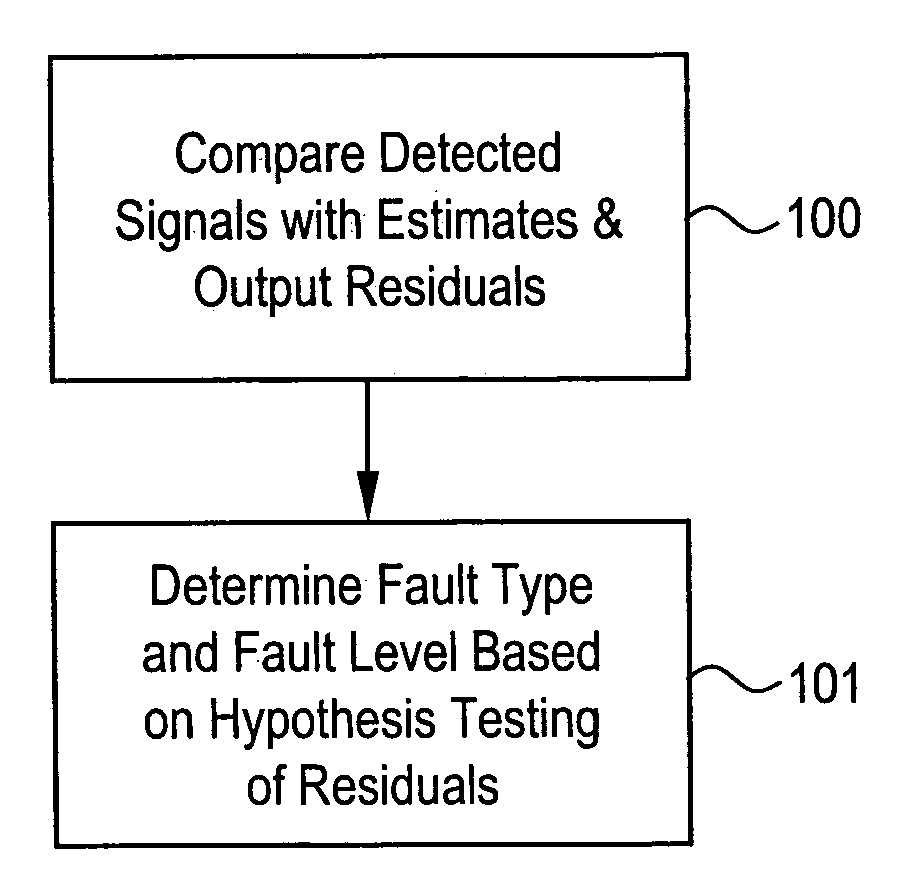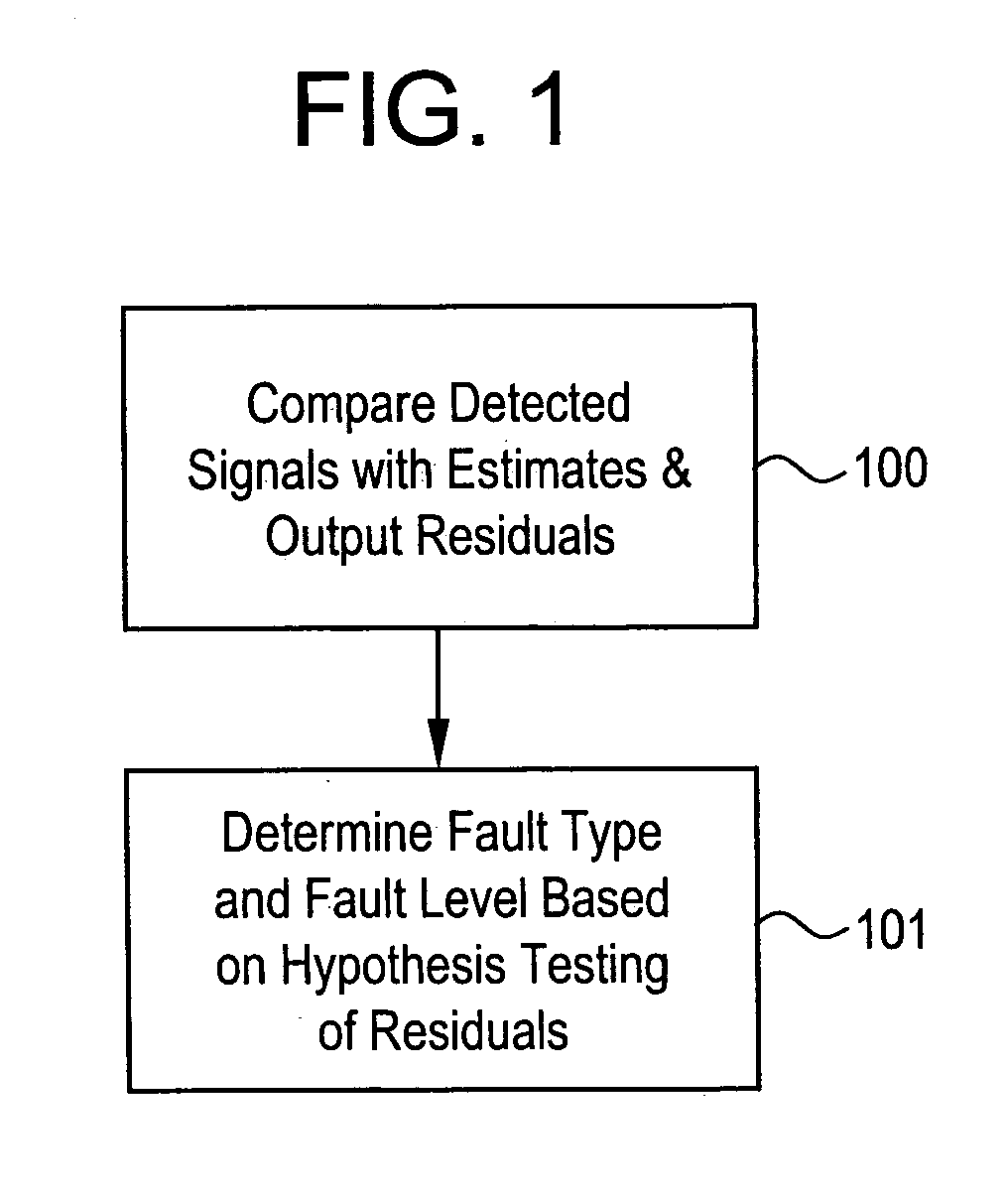Method and apparatus for in-situ detection and isolation of aircraft engine faults
a technology for aircraft engines and fault isolation, applied in the direction of instruments, testing/monitoring control systems, nuclear elements, etc., can solve the problems of accelerating deterioration, high safety risks, and failures of small components and other operating faults
- Summary
- Abstract
- Description
- Claims
- Application Information
AI Technical Summary
Problems solved by technology
Method used
Image
Examples
Embodiment Construction
[0019] The present invention will be explained in further detail by making reference to the accompanying drawings, which do not limit the scope of the invention in any way.
[0020] Modern aircraft engines employ full-authority digital controls, which make use of sensors deployed throughout the engine. This invention describes how these same sensor measurements can be used to monitor the health of the engine, including its actuators and the sensors themselves. By using a system model with available sensors, this invention is able to isolate the cause of the engine event when it occurs. Moreover, this invention is able to distinguish small faults from large faults. Along with the safety advantages of being able to distinguish small faults from larger faults, the ability to detect small faults early enables more timely engine maintenance, which reduces costs and extends the operating life of the engine.
[0021] The invention will now be taught using various exemplary embodiments. Althoug...
PUM
 Login to View More
Login to View More Abstract
Description
Claims
Application Information
 Login to View More
Login to View More - R&D
- Intellectual Property
- Life Sciences
- Materials
- Tech Scout
- Unparalleled Data Quality
- Higher Quality Content
- 60% Fewer Hallucinations
Browse by: Latest US Patents, China's latest patents, Technical Efficacy Thesaurus, Application Domain, Technology Topic, Popular Technical Reports.
© 2025 PatSnap. All rights reserved.Legal|Privacy policy|Modern Slavery Act Transparency Statement|Sitemap|About US| Contact US: help@patsnap.com



